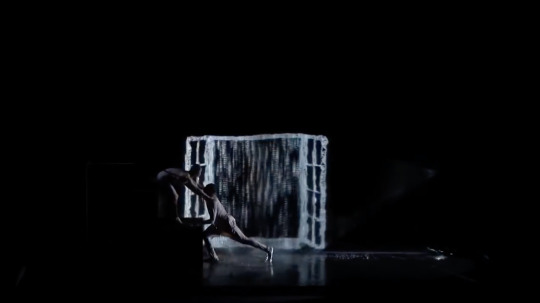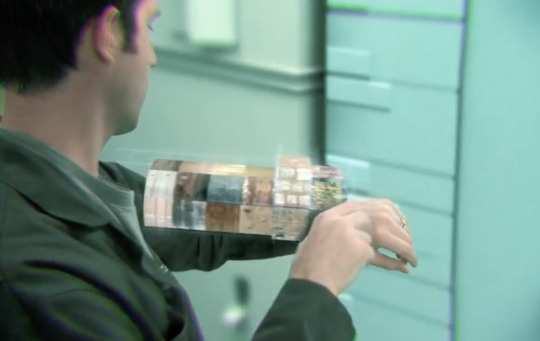Don't wanna be here? Send us removal request.
Text
1.
Bian, Y., Yang, C., Gao, F., Li, H., Zhou, S., Li, H., Sun, X. and Meng, X. (2016). A framework for physiological indicators of flow in VR games: construction and preliminary evaluation. Personal and Ubiquitous Computing, 20(5), pp.821-832.
This article focuses on the “flow experience”, a major component of UX in VR. It is a state in which an individual is completely immersed in an activity without reflective self-consciousness but with a deep sense of control. As such, keeping the user in a flow state contributes to optimizing UX and improving VR games design. This article includes a physiological evaluation model, which consists of five first-level indicators and their respective second-level indicators, to evaluate flow in virtual reality (VR) game.
The concept of flow is important during the designing of a VR game, as it could make or mar the entire game as well as the user experience. While this article emphases on how the flow can be measured and regulated, I am interested in their research of flow experience as a whole. The way that flow experience is being calculated and measured gives me an idea on how to improve my own game design.
0 notes
Text
2.
Brossard, D. (2013). New media landscapes and the science information consumer. Proceedings of the National Academy of Sciences, 110(Supplement_3), pp.14096-14101.
This research reviews major research findings related to science communication in the online environment and their implications for science in the 21st century. It focuses on the bias brought by search engines, the nature of scientific content in online environment, and the influences of the Internet on audiences’ knowledge and attitudes toward science.
While the article provides a rather broad picture on media literacy, the summary on mainstream media sources and their impacts are useful. It reflects on the effects of online media literacy to scientific research and the perception of science by the public in general. Not that I am interested in this specific topic, the methodology applied in this article offers a clear example on how to theorise the bigger picture by observing the small changes.
0 notes
Text
3.
D’Ausilio, A. (2011). Arduino: A low-cost multipurpose lab equipment. Behavior Research Methods, 44(2), pp.305-313.
This article describes the Arduino and how it works. The author compares the hardware equipment in psychological and neurophysiological experiments to highlight the advantages of applying Arduino.The development of Arduino and the rapid development of the large open-source community are inseparable.
I think the emergence of Arduino is very meaningful, as it has made the expensive technology hardware civilian, and made it accessible for everyone to use the technology and be creative. What’s more, Arduino can load the experimental script on the board’s memory and let it run without interfacing with computers or external software, thus granting complete independence, portability, and accuracy. I recently made an interactive fruit piano with Arduino. It was really fun. At the same time, I learnt some programming knowledge. I plan to learn more about Arduino in the future.
0 notes
Text
4.
Lan, Y., Indy Y. T., H. and Shih, M. (2019). Effective learning design of game-based 3D virtual language learning environments for special education students. Educational technology & society, 21(1176-3647), pp.213-227.
This article describes a VR platform that can enhance language learning for children with disabilities. The advantage of VR’s 3D virtual world for children’s education is that it can greatly attract children’s attention and improve learning fun. But the authors also show that the study is limited and currently cannot meet the needs of children with various types of disabilities.
I searched and found that more and more people are now starting to study new areas of VR technology, not only staying in VR games, but also helps in developing education, medical and other aspects. So before I prepare for a VR project, I need to think about the purpose and meaning of the production.
0 notes
Text
5.
Riedl, M. (2016). Can Augmented Reality Games Like Pokémon Go Ever Have Stories?. [online] Medium. Available at: https://virtualrealitypop.com/can-augmented-reality-games-like-pokémon-go-ever-have-stories-ac8c71934b96[Accessed 3 Dec. 2019].
The author of this article discusses whether AR games can have stories. The author uses <The Elder Scrolls V: Skyrim> as an example to point out two different types of location-based storytelling: 1. Side Quests; 2. Alternate Reality Games. The shortcomings and difficulties of the universality of Side Quests and Alternate Reality Games are analyzed.
It also introduces inverse document frequency (TF-IDF)-it can obtain information about a location and convert it into a vector of similar locations, It ’s called Story Location Translation. It also introduces some equations to solve the problem. Finally, artificial intelligence is used to expand the deployment of stories that each player has different needs.
The method introduced in this article is very interesting. I hope that I can make an AR MAP app and make a different future world. This will be very cool. This will use GPS and other technologies. This should be a big deal. engineering.
0 notes
Text
6.
El-Yamri, M., Romero-Hernandez, A., Gonzalez-Riojo, M. and Manero, B. (2019). Designing a VR game for public speaking based on speakers features: a case study. Smart Learning Environments, 6(1).
Public speaking has been important to human life since ancient times. The author introduces an educational game that provides speakers with a safe environment to practice speaking and helps those who are afraid to speak in public reduce fear. The author highlights the future development and detailed process of developing a speech simulation game, and introduces the main working principle: they proposed an algorithm to control the virtual audience to give feedback in time through the speaker’s performance.
I think this game is very creative and very close to life. VR games are different from traditional games in that they are function. This research topics offers me insight in the functionality of VR and think about what more meaningful VR projects can be created.
0 notes
Text
7.
Rouse, M. (2019). What is User Interface (UI)?. [online] SearchAppArchitecture. Available at: https://searchapparchitecture.techtarget.com/definition/user-interface-UI [Accessed 28 Nov. 2019].
The article explains what a user interface (UI) is, lists the various types of UI, provides examples of UI and briefly examines the relationship between user interface and user experience (UX) as well as the evolution of UI.
She has a clear idea and a clear structure of the article. Each paragraph has a subtitle prompt. However, the article does not provide useful examples on the usage or management of UI. And the article does not offer any references, which made it very limited.
It is very easy to summarize the content of the article. This is not an academic essay . I think it is more like a web page.
0 notes
Text
8.
Cherbakov, L., OTHER AUTHERS (2009). “Virtual Spaces: Enabling Immersive Collaborative Enterprise, Part 1: Introduction to the opportunities and technologies”. USA: developerWorks. Retrieved 2009-10-23.
This report is consisted of three parts: 1) the usage patterns and technologies that contributed to the rise of virtual spaces development in IBM; 2) the social aspects, technologies used, architecture, business value, and lessons learned from the virtual spaces; 3) the development and future direction of virtual worlds standards. The report focused on the experiences observed from IBM and offered interesting information on the initial development of virtual world games (including the original virtual world games OpenSimulator, Second Life and Torque).
0 notes
Text
9.
Kim, H., Lim, H., Lee, S. and Ro, Y. (2019). VRSA Net: VR Sickness Assessment Considering Exceptional Motion for 360° VR Video. IEEE Transactions on Image Processing, 28(4), pp.1646-1660.
The author of this paper proposes to use an objective VR disease network (VRSA) to build a database to predict and quantify the degree of disease caused by 360-degree VR video to the human body. VR disease refers to the dizziness generated by users in the experience of VR products.
I’m very interested in VR. Through this article, I need to focus on the risk assessment of my VR project, focus on the side effects on the experiencer when experiencing VR, and reduce VR diseases.At present, it is impossible to accurately predict the number of people affected by VR diseases, because each person’s brain is receiving different signals in the digital environment.
This article proposes that abnormal motion in the motion mode of VR video should be considered, which is a key factor leading to VR diseases. Therefore, using VRSA to monitor abnormal movements, and then through database analysis, can predict the degree of damage caused by VR diseases to the human body.
0 notes
Text
10.
Thomas, S. (2019). The star in VR. Celebrity Studies, 10(4), pp.453-468.
In the article, the author discusses the influence of movie stars on the development of the VR industry, and studies the position and function of movie stars in VR. Since the mid-2010s, VR technology has focused on investing in the mass consumer market, but due to cost and other issues, development has been limited. Most VR technologies can only be used for gaming. This is also a problem I personally found. In addition to the development of VR technology in the game field, it is currently difficult to develop into mainstream media.
The author believes that movie stars are the bridge for the future development of VR. The value of the film star to VR is multiple, complex, ongoing, and interdependent. Using fans as examples, immersive experiences can change the way of chasing stars. Widespread acceptance of immersive media through movie stars.
In the end, the author proposes three ways for movie stars to operate VR: 1. As a promotion platform for VR, it is different from other forms of stars; 2. as a structuring presence in the VR text; 3. as a transmedia system
0 notes
Text
1.Chinese architecture
LINK���https://www.youtube.com/watch?v=RXocOcne1iU

(image from web)
This is a VR work. The work uses VR to restore ancient Chinese architecture. Let the audience come and feel the beauty of ancient Chinese architecture. VR games are currently hot, but I think this is just to attract players by making some horror or violent (Resident Evil) games through the characteristics of VR immersion. For this Chinese architectural VR, the author applied VR technology to the field of cultural communication, which is a very good innovation.
Through this work, I realized that in the future creation of VR projects, I should avoid studying VR games simply, but change my mind and discover some new developable areas. Maybe in a stage where VR games are saturated, the opposite will often get unexpected gains. Through research, I found three good future VR development areas: Retail industry Online shopping is currently very popular. However, if you can put on a VR headset and “walk around” in these digital stores, enjoy the best location for shopping without being affected by the crowd or dragging heavy bags. 2. Medical industry New surgeons no longer need to use plastic models or corpses. Instead, they can use VR or AR to iteratively learn the actual surgical procedures previously recorded. 3. Physicalization of Information Most companies face challenges in collecting and using massive amounts of data. This is true for both customer, operations, and employee data. But if this data can be presented in VR, it will greatly improve efficiency.
0 notes
Text
2. Minecraft Earth
LINK:https://www.youtube.com/watch?v=tzCBCoC2bjs

(image from web)
“Minecraft” is dedicated to fully implementing the concept of augmented reality, instead of just seeing a virtual object on the side of the road, you can show the building you created in the game to the real world through AR technology, and then users can move around and explore the virtual blocky world as if they were really in it. With AR technology, games may be able to turn the earth into a huge playground, and you can play with everyone.
I searched and found that Minecraft: Earth applied GPS-based augmented reality technology, and used Apple and Google’s ARKit and ARCore software. These two AR softwares are currently very difficult for me to learn, and I am learning through online tutorials. At the same time, I think the most powerful part of this AR game is that it uses Microsoft’s Azure technology to identify the three-dimensional space in the real world, analyze the world through the Azure algorithm, and generate the world. The birth of a good work is inseparable from a strong technical foundation.
In the previous DMA course, there was a class called Make it real, which required you to make a real object and connect with digital products. What this has in common with AR games is the connection between virtual and reality. I placed the production spaceship in front of a video, creating the illusion of spcejump. If I continue to develop this work, I will make an AR spaceship game, put the spaceship into the mobile phone, and control the spacecraft to fly in the real world. Also for the sake of fun, I can add the function of attacking other aircraft; I can also be with my friends Fight your own spaceship in an AR game.
I think AR mobile games will become mainstream in the future. Ubiquitous mobile phones and fast-growing palm technology will enable various emerging technologies to build virtual playgrounds around the world.
0 notes
Text
3. Freckled Sky
LINK:https://www.youtube.com/watch?v=w0sYbeqn0nA&list=PLuK_wjguMUsD8tZUZXlht_VzaYImA9n3W&index=9

(image from web)
Freckled Sky is the perfect digital performance. Through the interaction between the two dancers and the projection behind them, this performance created new forms of entertainment and used high-end technology to eliminate the boundary between the performer and the audience. The effect on audience is very shocking.
I also created a project in a DMA course called Media in Performance. I used a processor to program a sound visualization work, which can be used for concerts and other performances. Same change, this is just a demo. In fact, the preparation of digital performance is complicated. First, you need to use 3dmax or C4D to model virtual performances and virtual actors; collect real actors’ movements; use Virtools, a virtual development platform, also requires C ++ programming language. These are all things that I need to learn gradually. Therefore, I hope that my work can be upgraded through a series of studies, such as the overall scene effect, visual senses, and performer abilities.
0 notes
Text
4. World Builder
LINK:https://www.youtube.com/watch?v=VzFpg271sm8


(image for web)
This is a very short movie from ten years ago. What struck me was that this small movie took 1 day to shoot and 600 days for special effects. Many people say that this movie is really a very important movie, enough to refresh the world view of many people 10 years ago. Without discussing the plot of the movie, only the world where the actor is located is the VR world that will be popular 10 years later. This idea was absolutely avant-garde 10 years ago. The actor can build objects at will in the movie, just like the real-life version of Minecraft. At the same time, what I admire the most is the post-production of this short film, which is really great! The post personnel need to build many 3D scenes, which is a very tiring thing, and the 3D model has many details, which shows that the workload is huge. In addition to VR, AR and other fields, I am also interested in post-special effects in videos. I hope that I have the opportunity to combine my areas of interest to complete a work. So I have to learn not only some 3D software but also AE video editing software.
0 notes
Text
5. ZERO CALIBER VR
LINK:https://www.youtube.com/watch?v=m8auRepFbwM

(image from web)
Regarding my graduation project, I consider making a VR shooting game, which will be very interesting. I found a very interesting FPS VR shooting game on YouTube called ZERO CALIBER VR. There are many very realistic details in the game, and multiple players can collaborate online at the same time. So the rich storyline, realistic detail processing and physics engine make the player completely immersed in the game environment.
This game has given me a lot of inspiration and allowed me to think more about my graduation project. I think that one of the great fun of VR games is that VR control is sometimes not easy, so in the game experience There are many funny things happening, this is an objective existence, which can attract a lot of players. So subjectively, what I want to do is like ZERO CALIBER VR, think more about how to make the game look more realistic, consider weapon details, scenes, story themes, these are the core factors that can ultimately attract players. I am going to use Unity to make VR games, so this requires me to better understand the operation of Unity and understand Unity’s built-in physics engine, NVIDIA. I will continue to follow this game and hope to learn more through this game.
0 notes